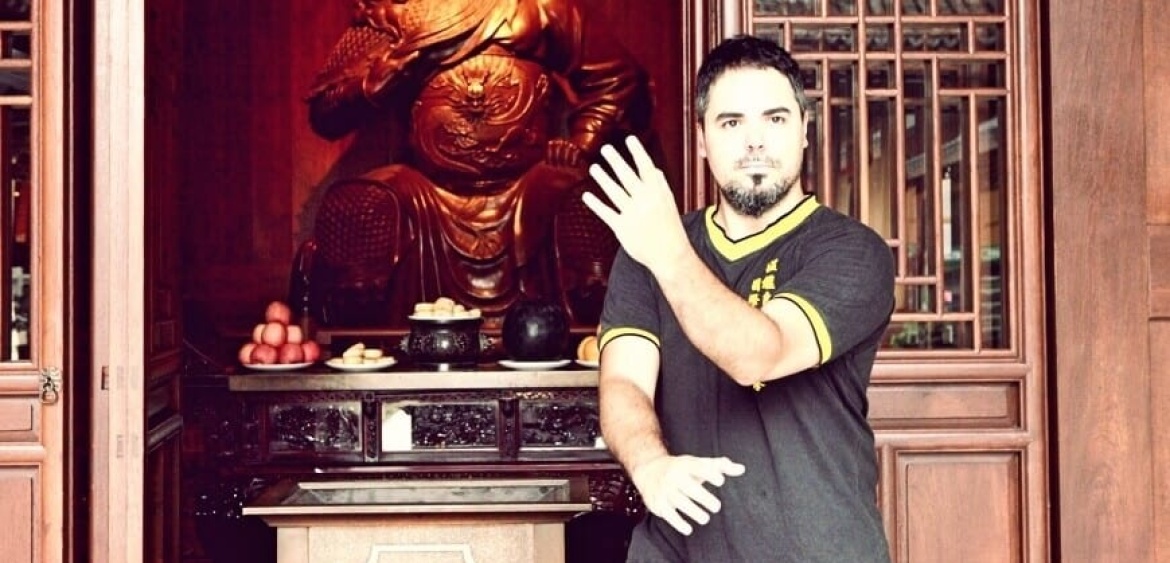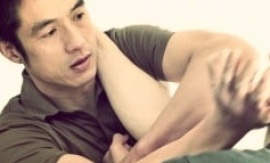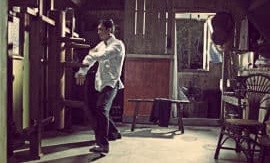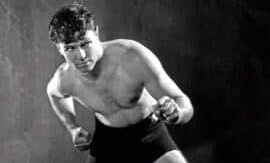
SIFU KLEBER BATTAGLIA STARTED HIS TRAINING AT AGE NINE WITH THE JAPANESE ART OF JIU-JITSU. AS A TEENAGER, HE ALSO STUDIED WESTERN BOXING, ESCRIMA AND HARIMAU PENCAK SILAT UNTIL HE FELL IN LOVE WITH WING CHUN.
In 2010, he moved to Hong Kong to follow his Sifu, Wan Kam Leung, and later moved to Mainland China to deepen his knowledge of Nei Gong and the internal arts.
What is the essential core of the art? Are techniques and strength over-valued?
People, especially in the West, have a misunderstanding about strength. They want to isolate the muscles and use the limbs to generate power, but that way of generating power is a unilateral tension and can only give you a partial force. Real power comes from bones and tendons, from using the whole body in connection with the movement. This increases not only your power but also your speed and sensitivity. However, people use the wrong methods to achieve strength that ultimately does more harm than good. They should train their bodies to be naturally aligned in everything they do: standing, walking, sitting, and lying. Only in this way will strength come from inside out, reaching the whole body; only in this way will you find true rooting in your position. With correct alignment, the body will naturally tell you what to do for you to truly understand the core of the art. Many people focus on external techniques without realising that in doing so, they are weakening their position and power.
What should be the focus while training Wing Chun?
People approach martial arts for different reasons; some do it for health, others for fighting and self-defence, and still others for spiritual or even intellectual reasons. However, real Gung Fu combines all three. The most important part that people don’t get is the health part. Many people misunderstand exercises for health, and that may cause them more harm than good. Like the Chinese concept of Yin-Yang, preservation of health and self-defence are inseparable from each other. No matter how strong you are, if you aren’t healthy, you can’t fight well, so even people who focus on combat should look for systems that keep them in good health while learning combat skills.
Focusing merely on fighting will only give you a partial understanding of what Gung Fu truly is. Instead, finding the correct methods to use the body to increase health and learn effective ways to defend yourself will bring you to a deeper understanding of your body as a whole. That way, the art will automatically take you towards spiritual or mental development. For me, I really propose this third way that combines both the body and the mind. It is a wholeness—a perfectly circular power.
What is the Mind-Body connection?
While studying a martial art, many either focus too much on the mental or technical aspects, while others focus too much on the physical aspects. However, the wholeness of the teaching of every martial art can only be truly achieved by having the correct balance between the two. You can use the mind to understand the body and the body to understand the mind—in this way, you can listen to both of them deep within yourself to fully understand the art and develop something extraordinary.
Many are blind followers of great teachers but fail to use their own minds and bodies to achieve their own particular understanding. Great teachers can only show us the way. We are all different and will have different results, but by listening inwards and training our mind and body to be one, we will achieve the unique possibility of our particular Mind-Body connection.
What is relaxation?
Many talk about relaxation (Fong Song) in Wing Chun and other arts, but they either can’t do it or are too relaxed. However, Fong Song doesn’t literally mean relaxation, which is why there is a lot of confusion. I would say it is more like Dynamic Tension: just as if pulled too much, a guitar string will break, but if left too loose, will make no sound. When the string has the perfect amount of tension, it will vibrate and react to the different pressures applied to it in a way complete tension or relaxation would never produce. The body works in the same way. If you only use force, you will be too tense. If you relax but don’t use the mind/intention, you will end up too loose. You really have to relax while using your mind at the same time. But, be aware: tension can also be created by the mind, by the fear of being hit. It is considered a taboo to get hit in a fight. That might be the case with mediocre practitioners, but the mind must accept that when you step into a fight, you will get hit somehow. You will maximise your power by being relaxed. This is nothing new; if you watch professional fighters, they are all very relaxed while fighting.
Is Wing Chun a complete martial art?
I believe it can be. If you look back at Gung Fu in the past, it meant something entirely different from what it means today. Historically, Gung Fu was for the leisurely rich; if you look at all the famous masters, they were not only martial artists but also painters, calligraphers and poets. They were able to study other kinds of traditional arts to complement their martial practice. Because this took so much time and dedication, it wasn’t possible for the working class.
Gung Fu is like a bonsai tree; it needs a lot of care to grow. Unfortunately, for modern Wing Chun, the art and internal aspects were lost because, during the Taiping Rebellion in the Guangzhou region, only the combat part of it was needed. Afterwards, farmers and workers, who were not focused on health or spiritual development, were the ones passing down the style so its internal roots were misplaced.
What do forms mean to you?
Forms were created to pass down specific movement patterns unique to each style, but forms in themselves are meaningless and only beginners should focus on them. Each form has a specific point it wants to develop, but when the body understands how to move as a connected unit, then forms are no longer useful to the practitioner’s advancement.
After years of researching the roots of many Gung Fu styles in China, I believe the creators of those arts practised no specific sequences of movements; they just moved according to the core principles of their art. Forms were only developed at later stages by their students. That is why, nowadays, there are so many differences in forms between different lineages.
Many people these days talk about external vs. internal methods. Do you think there is a difference between the two?
There is a lot of excitement these days surrounding internal methods. However, many people confuse Body Structure with internal strength. They are in fact two different things. While Body Structure is a mechanical way to withstand pressure, it has little to do with internal power. True internal methods teach your body to move in a unified way that allows you to control it while detaching from pressure. Many also overly focus on rooting down but lack mobility. The whole point is to be connected while moving in space. Being connected while standing still is the first step. In the past, internal and external were not two different concepts, but Westerners like to separate things. This is also the case with the concept of Yin and Yang; Chinese people have always seen it as Yin-Yang—one inseparable thing.



















